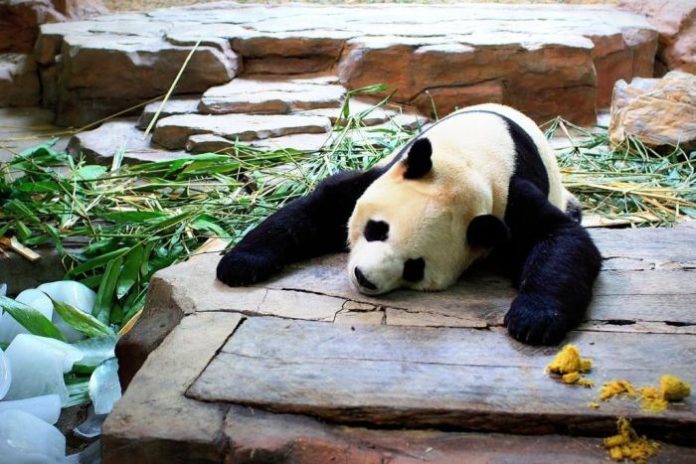
Every year we are reminded of the important impact that Influenza A virus (aka ‘the flu’) has on human health.
Most workplaces now offer free flu vaccinations in recognition of the fact that there is high risk of flu infections during the winter months.
But have you have wondered about flu infections in species other than humans? Specifically, have you ever wondered if pandas get the flu?
When wild birds get the flu
The original reservoirs of the flu virus are wild waterfowl and shorebirds as they harbour a combination of 16 different H protein and 9 different N protein subtypes of the flu.
But birds don’t display the same kinds of symptoms as people.
Typically, when wild birds have the flu, it causes a gastrointestinal infection without any obvious signs of disease.
From wild birds, the flu can spread to a wide variety of different species including poultry, pandas, camels, and sea mammals.
Crook chooks
Poultry birds, like hens, experience the flu in very different ways to their wild avian cousins.
Low pathogenic strains of the flu do not cause any obvious signs of disease in poultry.
However, highly pathogenic strains cause systemic and sometimes fatal infections in poultry.
These infections are so severe that chickens can die within two days of being infected.
Outbreaks of these strains of flu cause significant damage to the poultry industry and can result in the mass culling of infected or potentially exposed poultry.
Seals sneeze
There have been various outbreaks of the flu amongst harbour seals along the New England coast of the USA as well as along the coasts of Northern Europe.
When seals get the flu it is quite similar to what we see in humans in so far as they can develop pneumonia, sneeze, and most likely spread the virus to other seals when they are all resting together on land.
But seals don’t just pass the seal flu between each other.
In fact, during an early experimental study on the flu in seals, a seal infected with the flu virus sneezed in the face of one of the investigators.
This investigator then went onto develop severe conjunctivitis and the flu virus could be isolated from swabs taken from the infected eye.
Pig pandemic?
Most people would remember the 2009 influenza pandemic, linked to the pig population, called the ‘swine flu’.
But perhaps we might owe a bit of an apology to our piggy friends, as this was not just a swine flu, but a combination of human, avian and swine influenza viruses.
In fact, pigs can become infected with several different strains of the flu and these infections can cause a range of different symptoms ranging from no obvious illness to an acute respiratory disease.
The reason a swine flu becomes significant to human health, is because pigs often live in close proximity to other animal species — including humans — which makes cross-species infection more likely.
We pass it on to pandas
So what does happen when a panda gets the flu?
The first properly recorded case of ‘panda flu’ was observed a panda conservation centre in China in 2009.
Employees at the centre noticed that three pandas were sneezing and displaying signs of a respiratory infection.
Subsequent analysis showed that these pandas were all infected with the 2009 H1N1 ‘swine flu’.
The genetic makeup of the virus suggested that the pandas had become infected after interacting with infected humans.
The notion of pandas getting the flu and sneezing is somewhat endearing, but if the pandas got the flu from their handlers, what is to say that pandas cannot spread the virus to humans?
Whilst this does not mean that we should start panicking or banning contact between people and animals at zoos and wildlife parks, it does show that people’s health can be affected by the animals around them.
This means that any attempt to improve human health must also take into account the role that different animal species can play in the spread and evolution of viruses.
So the next time that you see a cute video online of a panda sneezing, don’t just share it on social media — think about what it means for human health.
Dr Kirsty Short researches serious flu infections with the University of Queensland and is one of RN’s Top 5 under 40 scientists.
